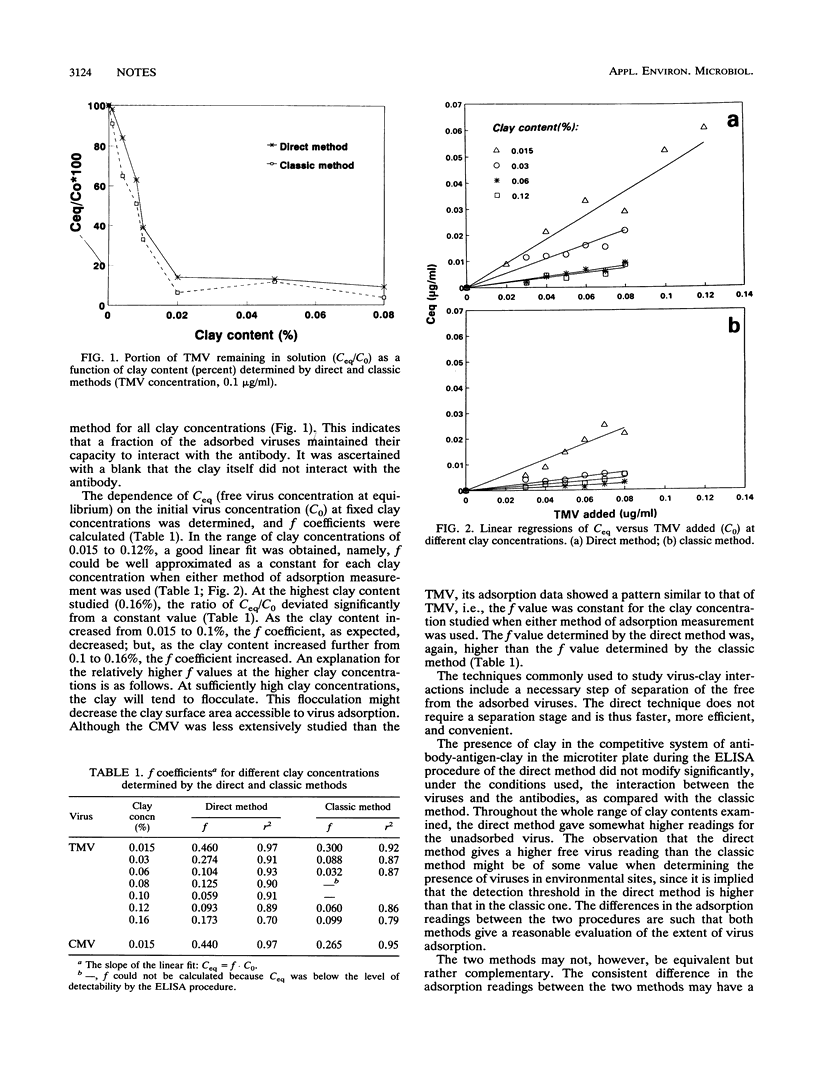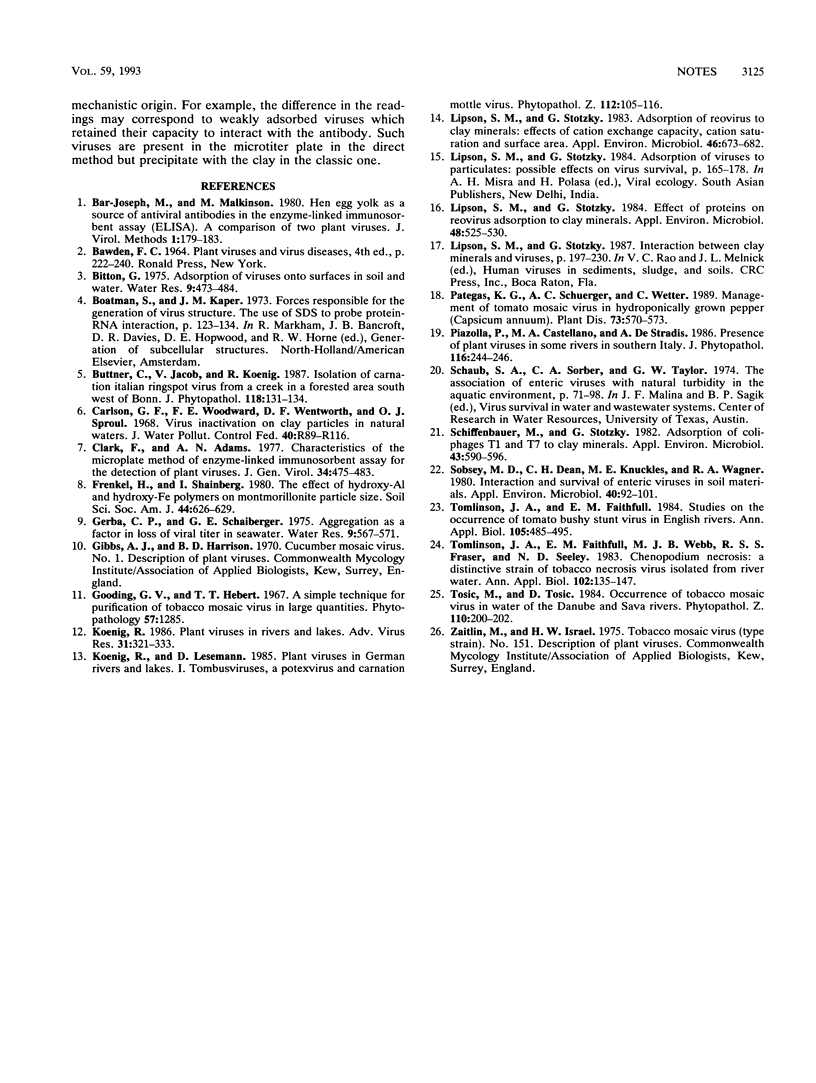Abstract
Quantification of two plant viruses in suspensions of homoionic Ca-bentonite was conducted by applying to the enzyme-linked immunosorbent assay plates either the virus-clay mixture (direct method) or the supernatant obtained after the clay was allowed to settle (classic method). Both methods showed a similar dependence of free virus content on clay concentration. A higher content at equilibrium was measured for both viruses by the direct method. The advantage of using the direct over the classic method is discussed.
Full text
PDF


Selected References
These references are in PubMed. This may not be the complete list of references from this article.
- Bar-Joseph M., Malkinson M. Hen egg yolk as a source of antiviral antibodies in the enzyme-linked immunosorbent assay (ELISA): a comparison of two plant viruses. J Virol Methods. 1980;1(3):179–183. doi: 10.1016/0166-0934(80)90014-2. [DOI] [PubMed] [Google Scholar]
- Clark M. F., Adams A. N. Characteristics of the microplate method of enzyme-linked immunosorbent assay for the detection of plant viruses. J Gen Virol. 1977 Mar;34(3):475–483. doi: 10.1099/0022-1317-34-3-475. [DOI] [PubMed] [Google Scholar]
- Gooding G. V., Jr, Hebert T. T. A simple technique for purification of tobacco mosaic virus in large quantities. Phytopathology. 1967 Nov;57(11):1285–1285. [PubMed] [Google Scholar]
- Koenig R. Plant viruses in rivers and lakes. Adv Virus Res. 1986;31:321–333. doi: 10.1016/s0065-3527(08)60267-5. [DOI] [PubMed] [Google Scholar]
- Lipson S. M., Stotzky G. Adsorption of reovirus to clay minerals: effects of cation-exchange capacity, cation saturation, and surface area. Appl Environ Microbiol. 1983 Sep;46(3):673–682. doi: 10.1128/aem.46.3.673-682.1983. [DOI] [PMC free article] [PubMed] [Google Scholar]
- Lipson S. M., Stotzky G. Effect of proteins on reovirus adsorption to clay minerals. Appl Environ Microbiol. 1984 Sep;48(3):525–530. doi: 10.1128/aem.48.3.525-530.1984. [DOI] [PMC free article] [PubMed] [Google Scholar]
- Schiffenbauer M., Stotzky G. Adsorption of coliphages T1 and T7 to clay minerals. Appl Environ Microbiol. 1982 Mar;43(3):590–596. doi: 10.1128/aem.43.3.590-596.1982. [DOI] [PMC free article] [PubMed] [Google Scholar]
- Sobsey M. D., Dean C. H., Knuckles M. E., Wagner R. A. Interactions and survival of enteric viruses in soil materials. Appl Environ Microbiol. 1980 Jul;40(1):92–101. doi: 10.1128/aem.40.1.92-101.1980. [DOI] [PMC free article] [PubMed] [Google Scholar]


